What is art? – The dictionary definition of art says that it is “the conscious use of skill and creative imagination, especially in the production of aesthetic objects” (Merriam-Webster). Art is essential to society as it stimulates creativity, reflects culture, fosters empathy, provokes thought, and offers a medium for expression. It enhances society’s intellectual and emotional understanding of the world.
But the thing about art is that it’s so diverse that there are as many ways to understand it as there are people.
That’s why there are scholars who give their special definition of the word, such as the one penned by this famous Russian novelist, which goes:
“Art is the activity by which a person, having experienced an emotion, intentionally transmits it to others” – Leo Tolstoy
During his life, Tolstoy was known to write based on his life experiences, such as his most famous work, “War and Peace,” which used much of his experience during the Crimean War.
Whether or not his definition of art is the best, the point is that people look at art based on how they have experienced it.
What is Art?
There are many common definitions of art as per many books by famous artists and authors. Few to quote:
Art is
- any creative work of a human being
- a form of expressing oneself
- resides in the quality of doing; the process is not magic
- an act of making something visually entertaining
- an activity that manifests beauty (What is Beauty in Art?)
- the mastery, an ideal way of doing things
- not a thing — it is a way (Elbert Hubbard)
- the most intense mode of individualism that the world has known
- discovery and development of elementary principles of nature into beautiful forms suitable for human use (Frank Lloyd Wright)
Why is Art Important?
Probably, the most prominent theory which best explains – Why is art important – is from Van Jones, which subtly provides a great response to What is art?
Van Jones presented a graph that accurately represents the interaction between the four aspects of society and its different members.
Consequently, Vones depicts why art is important to our society.
The graph (below) represents our society.
Society is driven by the powerful elites, the dependent masses, the government, cultural producers, and artists
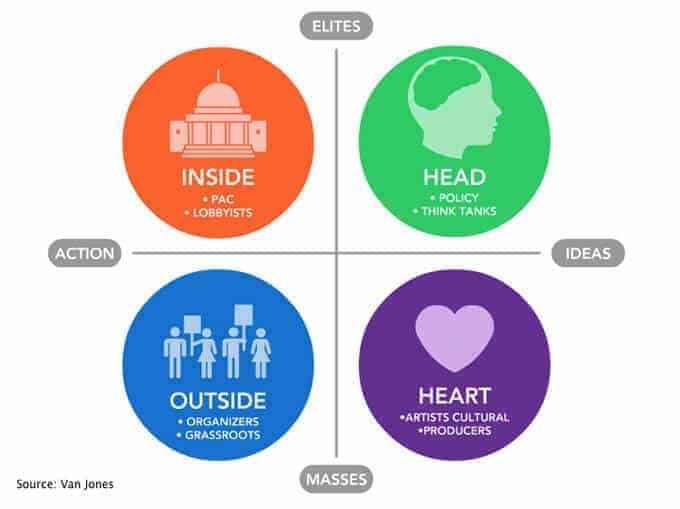 Van Jones Graph
Van Jones Graph
On the left, you have action, and on the right, ideas; elites are at the top, and the masses are below. There’s an inside act and an outside act.
On the inside, there’s big money: elites are spending millions of dollars to influence politicians and policymakers. The inside act has the power to influence policy creators.
On the outside, we at the grassroots set our expectations and needs so that the elected candidates pass laws that give us power. Masses reflect what society wants (heart)
The left side, “action,” often means quantifiable policy changes. The right side, “ideas,” can be harder to see. We are not necessarily talking about concrete things here, but rather, a “headspace.”
Academic institutions and think tanks, which are not always involved in the immediate policy wins, are significant in creating a culture of thought
While the left side, “action,” continues to produce quantifiable policy changes and new laws, the right side, “ideas,” can be hard to quantify its outcome. Although “head” talks about theories and academics, it fails to contribute significantly to policymakers.
Artists come into the play here at this moment
Artists are represented here on the side of ideas, in the “heart space.”
Art is uniquely positioned to move people—inspiring us, inciting new questions, and provoking curiosity, excitement, and outrage.
Artists can strengthen the will and push people to act. They do not think like policymakers or academics people.
Artists think from their heart – big, revolutionary, and visionary ideas.
This is why artists are able to move people to action, thus creates a significant cultural and political contributions.
This is what makes art powerful.
Impact of Art on Politics, Culture, and People
Art is essential in society because it is an essential ingredient in empowering people’s hearts.
When activists show images of children suffering from poverty or oppression in their campaigns, this is the art of pulling the heartstrings of society’s elite and powerful to make changes.
Similarly, when photographers publish photos of war-torn areas, it catches the attention of the masses whose hearts reach out to those who need help.
When an artist creates great music and movies, it entertains people worldwide. This is art, making a difference in society.
A very modern example of art in action is street art. When the famous Italian street artist Blu created the mural in Kreuzberg, it sparked a lot of solid and different reactions rooted deeply in the differences between East and West Berlin.
Who would have thought that a wall painting depicting two masked figures trying to unmask each other could elicit such strong reactions?
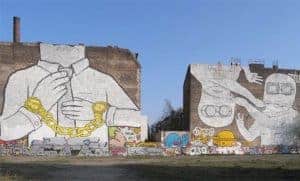
Now, the issue behind this mural is a different matter to discuss. But whether or not the effect of the mural was good, it cannot be denied how a well-crafted piece of art can have a significant impact on society.
Art is also a remarkable mode of depicting culture from all over the world
When you see a Zen garden in Sydney or San Francisco, you know that it’s a practice that originated from China.
Likewise, when you see paper swans swarming a beautiful wedding ceremony, you know that this is origami, an art from Japan.
When you see films featuring Bollywood music and dancing, you know that it’s a movie from India. Art can take cultural practices from their origins and transport and integrate them into different parts of the world without losing their identity.
There, these art forms can entertain, create awareness, and even inspire foreigners to accept these cultures, no matter how strange or alien they may seem.
And that’s precisely what John Dewey implies in Art as an Experience:
“Barriers are dissolved; limiting prejudices melt away when we enter into the spirit of Negro or Polynesian Art. This insensible melting is far more efficacious than the change effected by reasoning, because it enters directly into attitude.”
This is especially important in our highly globalized world.
Art has played an essential role in helping fight against intolerance of different cultures, racism, and other forms of unjust societal segregation.
With immigration becoming a trend, the world’s countries are expected to be more tolerant and accepting of those who enter their borders.
Art helps make that happen by making sure that identities and their cultures are given due recognition around the world.
Art stimulates creativity and innovation.
Art inspires creativity and innovation beyond boundaries, encouraging imagination, lateral thinking, and risk-taking. The process of creating art involves experimentation and novel ideas, which can influence progress in various industries.
Art also challenges perceptions and assumptions, encouraging critical thinking and open-mindedness, which are essential for innovation. By presenting alternative realities or questioning the status quo, art inspires individuals to think differently and to approach problems from unique angles.
Furthermore, the aesthetic experience of art can lead to epiphanies and insights.
The beauty or emotional impact of a piece of art can trigger ideas and spark the imagination in ways that logical reasoning alone may not. This can lead to breakthroughs in creative and scientific endeavors, as individuals draw inspiration from the emotions evoked by art.
Art plays a subtle yet significant role in our daily lives.
For instance, when a child takes part in a school art project, they are given a variety of materials to create a collage. As they construct a 3D model of an imaginary winged vehicle with multiple wheels, the textures and shapes inspire them. This hands-on exploration of materials and forms sparks the child’s interest in engineering and design, planting the seeds for future innovation.
The above example illustrates how art can engage young minds, encouraging them to think creatively and envision innovative solutions beyond conventional boundaries.
In essence, art fuels the creative fire, providing the sparks that can ignite the next wave of innovation in society.
Great Art elicits powerful sentiments and tells meaningful stories
Art can take the form of film, music, theatre, and pop culture, all of which aim to entertain and make people happy. But when films, songs, or plays are made for a specific audience or purpose, the art begins to diversify.
Films, for example, can be made to spread awareness or cultural appreciation. Songs can also be composed in a way that brings out certain emotions, give inspiration, or boost the morale of people.
During the Victorian period in England, women started to make a name for themselves with classic artworks such as Elizabeth Sirani’s “Portia Wounding Her Thigh”, a painting that signifies the message that a woman is now willing to distance herself from gender biasedness.
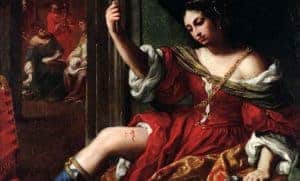
The painting’s subject depicts an act of a woman possessing the same strength as that of a man. “Portia” represents surrender because she isn’t the same type of woman known in society as weak and prone to gossip.
One of the revolutionary works in history that ultimately opened the doors of art to women in general showed the power of women in art
There are also works of art that illicit intellectual solid discourse – the kind that can question norms and change the behavior of society.
Sometimes, still, art is there to reach out to a person who shares the same thoughts, feelings, and experiences as the artist.
The truth is that art is more than just a practice – it is a way of life. Art is more than just a skill – it is a passion. Art is more than just an image – each one tells a story.
The fact that art is quite connected to human experience makes it unsurprising that we have always made it part of our ways of living.
This is why ancient and present-day indigenous groups from all over the world have a knack for mixing art and their traditional artifacts or rituals without them knowing, which in fact one of the fundamental reasons why art is essential.
Why is Art so Powerful? Why is art important to human society?
Perhaps the most straightforward answer to this question is that art touches us emotionally.
Art is influential because it can potentially influence our culture, politics, and even the economy. When we see a powerful work of art, we feel it touching deep within our core, giving us the power to make real-life changes.
In the words of Leo Tolstoy:
“The activity of art is based on the capacity of people to infect others with their own emotions and to be infected by the emotions of others. Strong emotions, weak emotions, important emotions or irrelevant emotions, good emotions or bad emotions – if they contaminate the reader, the spectator, or the listener – it attains the function of art.”
In sum, art can be considered powerful because of the following reasons, among others:
- It has the power to educate people about almost anything. It can create awareness and present information in a way that could be absorbed by many quickly. In a world where some don’t even have access to good education, art makes education an even greater equalizer of society.
- It promotes cultural appreciation among a generation that’s currently preoccupied with their technology. It can be said that if it weren’t for art, our history, culture, and traditions would be in more danger of being forgotten than they already are.
- It breaks cultural, social, and economic barriers. While art can’t solve poverty or promote social justice alone, it can be a leveled playing field for discourse and expression. The reason why everyone can relate to art is that everyone has emotions and personal experiences. Therefore, anyone can learn to appreciate art regardless of social background, economic standing, or political affiliation.
- It accesses higher orders of thinking. Art doesn’t just make you absorb information. Instead, it makes you think about current ideas and inspire you to make your own. This is why creativity is a form of intelligence – it is a unique ability that unlocks the potential of the human mind. Studies have shown that exposure to art can improve you in other fields of knowledge.
The truth is that people have recognized how influential art can be.
Many times in history, I have heard of people being criticized, threatened, censored, and even killed because of their artwork.
Those responsible for these reactions, whether a belligerent government or a dissident group, take these measures against artists, knowing how much their works can affect the politics in a given area.
In the hands of good people, however, art can be used to give back hope or instill courage in a society that’s undergoing a lot of hardships.
The Transformative Power Of AI Generated Art
AI-generated art is powerful due to its speed, creativity, accessibility, and ability to augment human creativity.
AI can generate complex images quickly, allowing for rapid experimentation and iteration, which fosters innovation.
By learning from vast datasets, AI can blend and mimic styles, creating entirely new artistic expressions. This technology democratizes art creation, enabling even those without traditional artistic skills to produce visually compelling images.
AI’s ability to customize and generate an infinite variety of images makes it invaluable in industries like advertising, gaming, and entertainment, where unique content is in constant demand.
Rather than replacing human artists, AI often enhances their creativity, acting as a tool for inspiration and pushing the boundaries of what’s possible.
The scalability and collaborative potential of AI further amplify its power, making it a transformative force in the modern creative landscape.
Art is a powerful form of therapy.
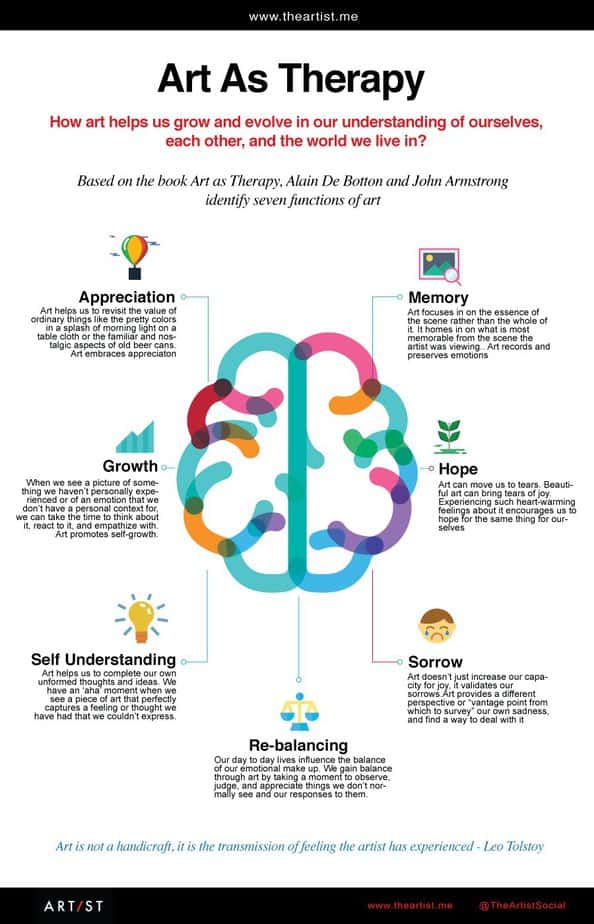
Some say art is boring. But the fact remains that art has the power to take cultural practices from where they are from and then transport and integrate them into different parts of the world without losing their identity.
There, these art forms can entertain, create awareness, and even inspire foreigners to accept these cultures, no matter how strange or alien they may seem.
This is especially important in our highly globalized world.
Art has played an essential role in helping fight against intolerance of different cultures, racism, and other forms of unjust societal segregation.
With immigration becoming a trend, the world’s countries are expected to be more tolerant and accepting of those who enter their borders.
Art helps make that happen by making sure that identities and their cultures are given due recognition around the world. Thus, it is essential to reflect upon – Why art is critical – which, in fact, provides you the answer to – What is art?
This is why we at The Artist believe that art is a form of creative human expression, a way of enriching the human experience.
NFTs: The Future of Art
Now, the world of art is shifting towards a digital and alternative world. And NFT is becoming a game-changing variable in the future of art.
An NFT, which stands for “non-fungible token” can be defined as a digital file that can be simply and easily transferred across a blockchain network.
Many people around the world are seeking out these digital assets to sell and trade in their everyday market trading, since these items are able to be traced, have value and oftentimes also have considerable rarity for collectors.
While artistic works are certainly a part of the NFT market, a variety of different players are getting involved through gaming systems, avatars, and even entire virtual worlds.
Such tokens have a wide variety of usage and while for many these are out of reach, for serious investors NFTs can prove to be a profitable source of income.
The Intersection of Art and Generative AI: Transforming Creativity
The intersection of art and generative AI is redefining the boundaries of creativity in unprecedented ways. By leveraging advanced algorithms and machine learning techniques, generative AI can analyze vast datasets of existing art, recognize patterns, and produce entirely new works that push the limits of human imagination. This collaboration between human creativity and machine precision allows for the exploration of artistic possibilities that were previously unattainable. Artists can now experiment with different styles, forms, and concepts in a more fluid and dynamic manner, leading to the creation of hybrid art forms that blend tradition with innovation.
Moreover, generative AI is democratizing the art world by making high-level artistic creation accessible to a broader audience. Individuals without formal training in art can use AI tools to generate compelling and intricate pieces, thus breaking down traditional barriers to entry. This democratization fosters a more diverse and inclusive art community, where various perspectives and ideas can flourish. As AI continues to evolve, it is likely to further transform the creative process, enabling new forms of expression and offering artists unique opportunities to engage with their audiences in more interactive and immersive ways.
Conclusion
Art plays a significant role in society by acting as an educational equalizer, fostering cultural appreciation, bridging cultural and social divides, and stimulating higher orders of thinking and creativity.
Art and its definition will always be controversial.
There will always be debates about what art is and what is not.
But no matter what the definition may be, it has been around us for as long as humans have existed (i.e. cave paintings, hieroglyphics).
Whether or not we are aware of it, we allow art to affect our lives one way or another, and the reasons why we make art are many!
We use the arts for our entertainment, cultural appreciation, aesthetics, personal improvement, and even social change. We use the arts to thrive in this world.
So, share your thoughts – What does art mean to you? Art plays a subtle yet significant role in our daily lives. For instance, when a child takes part in a school art project, they are given a variety of materials to create a collage. As they construct a 3D model of an imaginary winged vehicle with multiple wheels, the textures and shapes inspire them. This hands-on exploration of materials and forms sparks the child’s interest in engineering and design, planting the seeds for future innovation. This example illustrates how art can engage young minds, encouraging them to think creatively and envision innovative solutions beyond conventional boundaries.
The article contains sponsored affiliate links from Amazon to valuable resources.


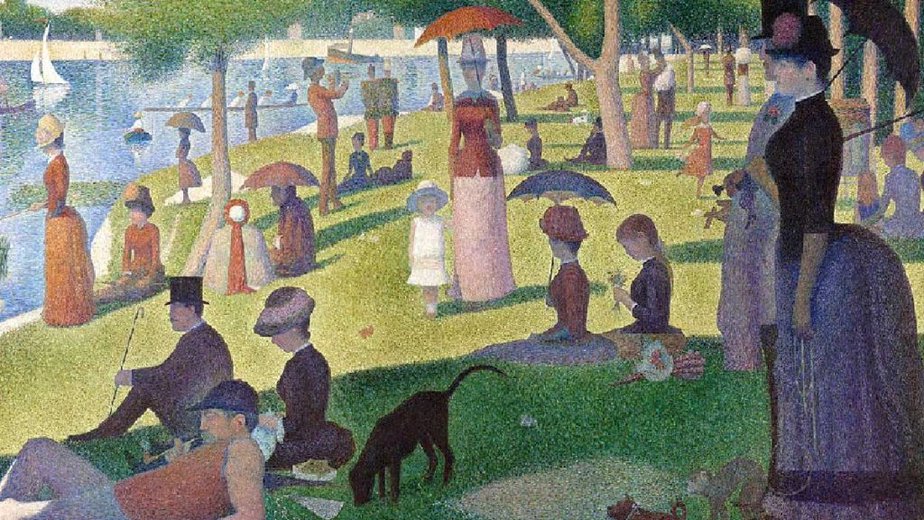
16 Comments
Pingback: 7 Functions of Art That Make Us Empathetic Human Beings
Pingback: A world full of colors | Ashley's blog
Pingback: The importance of art and fashion. – BlissfulReject
Pingback: Art is Important – {thy smile is quite toothy}
Pingback: Arts influence society, change the world - The Feather Online
Hello there! This is my first comment here so I just wanted to give
a quick shout out and tell you I genuinely enjoy reading your
posts. Can you recommend any other blogs/websites/forums that cover the same topics?
Thanks a lot!
Agreed with the summation, that art is a tricky thing to define. Shall we leave it at that and let the artist get on with it?
Hello! This post couldn’t be written any better!
Reading through this post reminds me of my previous room mate!
He always kept talking about this. I will forward this page
to him. Pretty sure he will have a good read.
Thank you for sharing!
I got this web site from my pal who informed me on the topic of
this website and at the moment this time I am browsing this website
and reading very informative articles or reviews
at this place.
Very good article! We will be linjking to this particularly great content
onn our website. Keep up thhe great writing.
Every day we Delhiites shorten our lives due too choking air.
This blog was extremely useful!
Great! Thank you so much. Keep up the good work.
Amazing! This has helped me out so much!
I do consider all the concepts you have introduced for your post.
They are really convincing and can certainly work.
Nonetheless, the posts are too quick for novices.
Could you please extend them a little from subsequent time?
Thanks for the post.
I love this! It was so interesting to read this!
Thank you!
thanks
Appreciating the commitment you put into your website and detailed information you offer.
It’s good to come across a blog every once in a while that isn’t the same unwanted rehashed information. Excellent read!
I’ve bookmarked your site and I’m including your RSS feeds to my Google account.